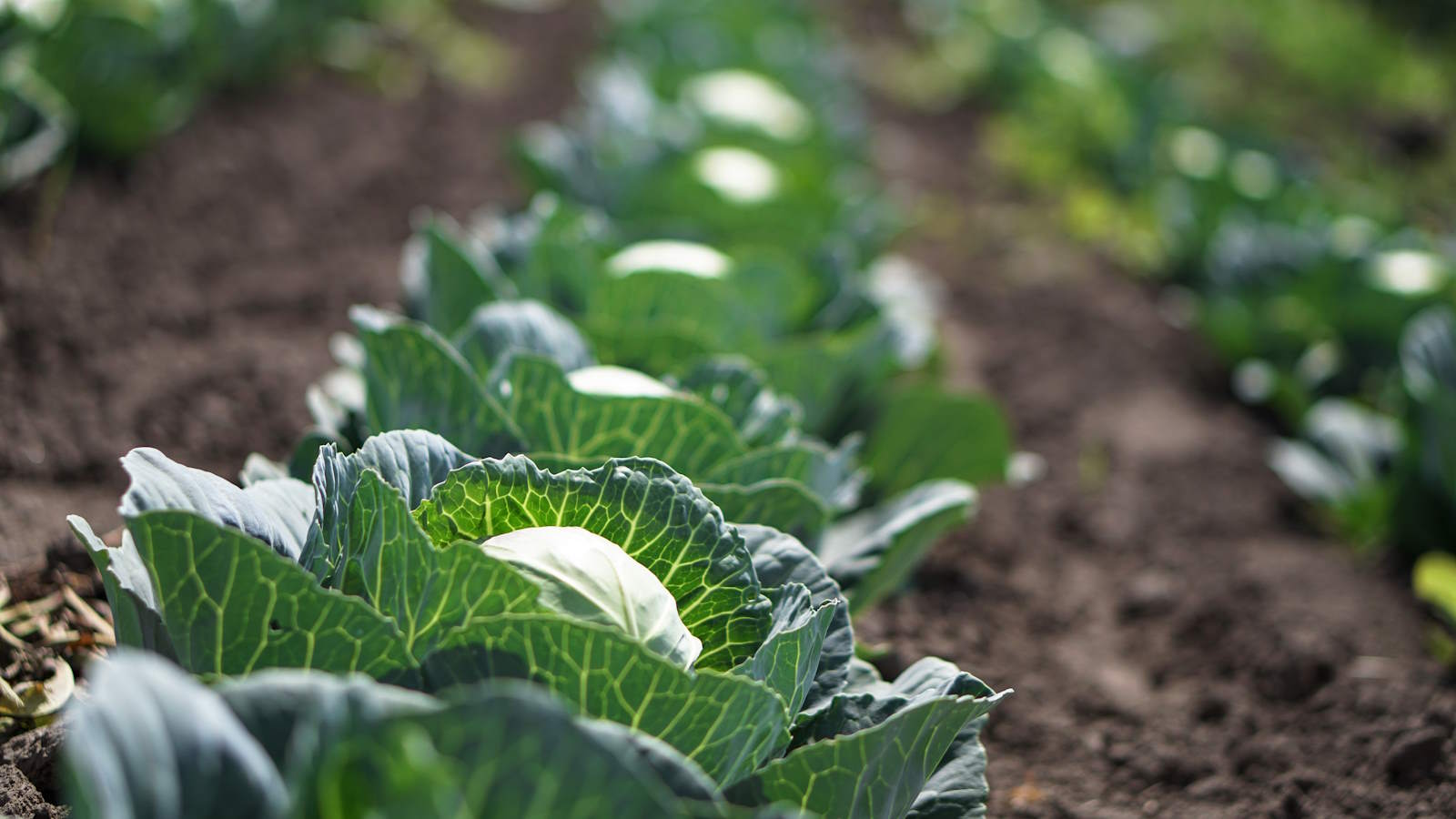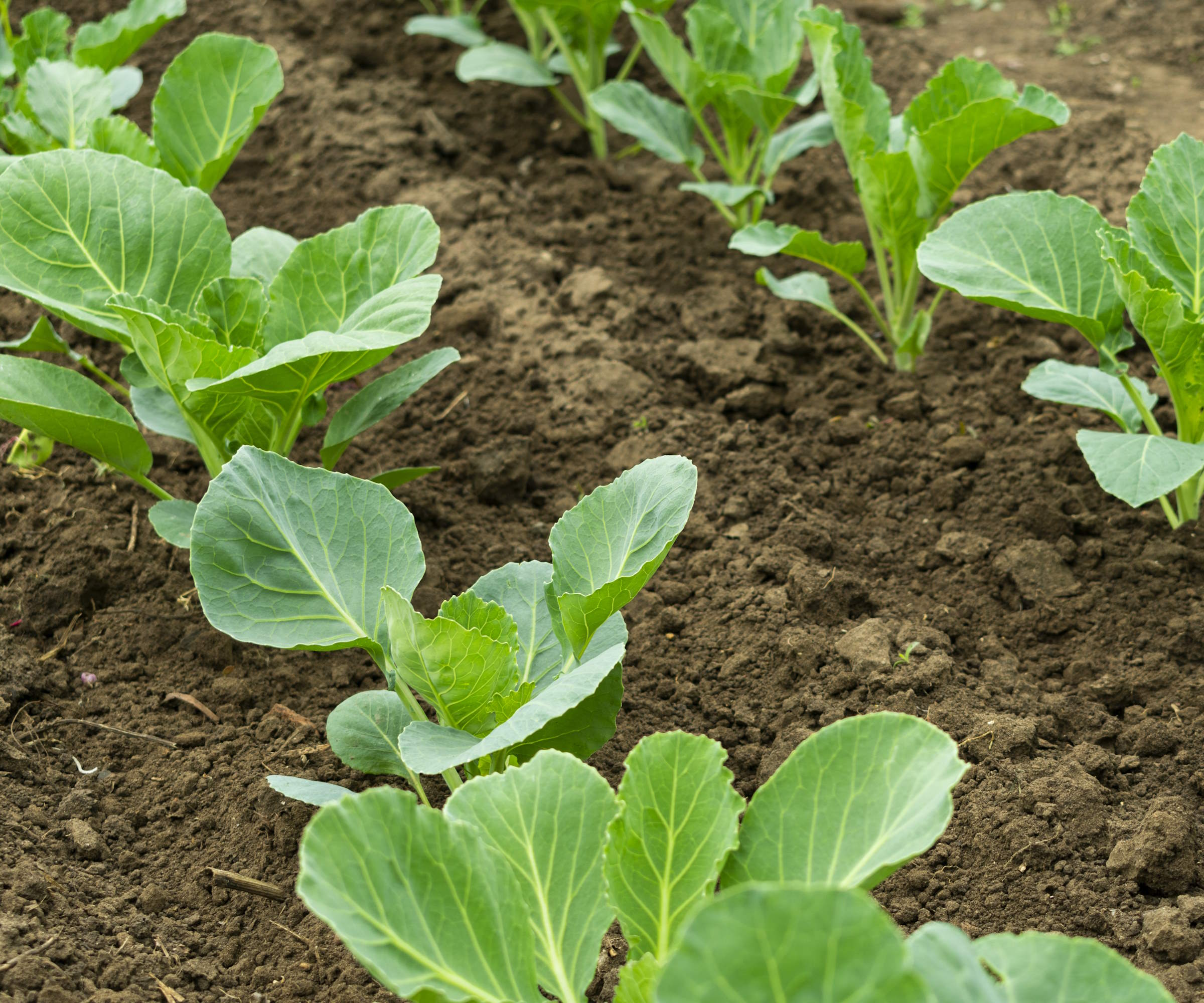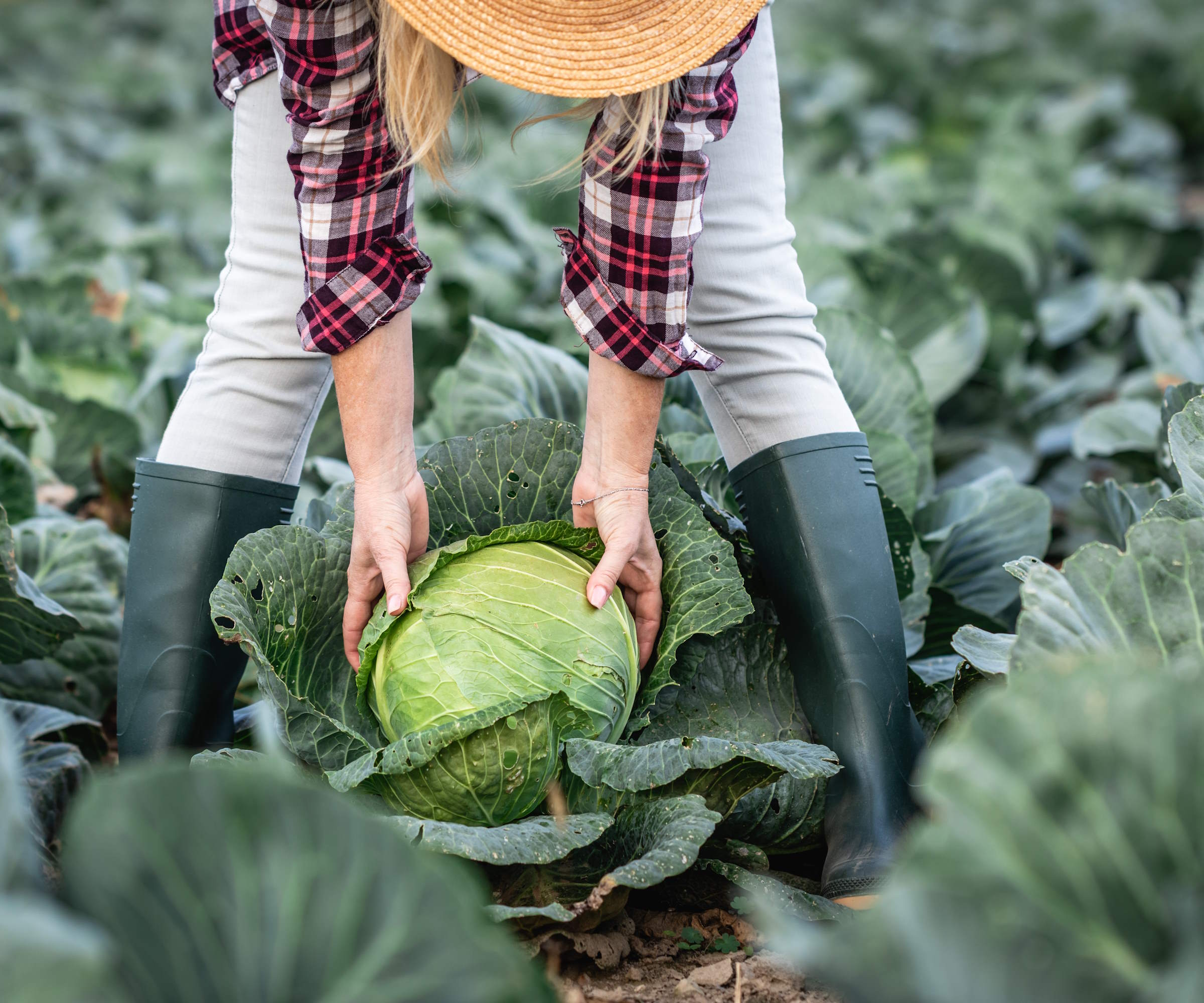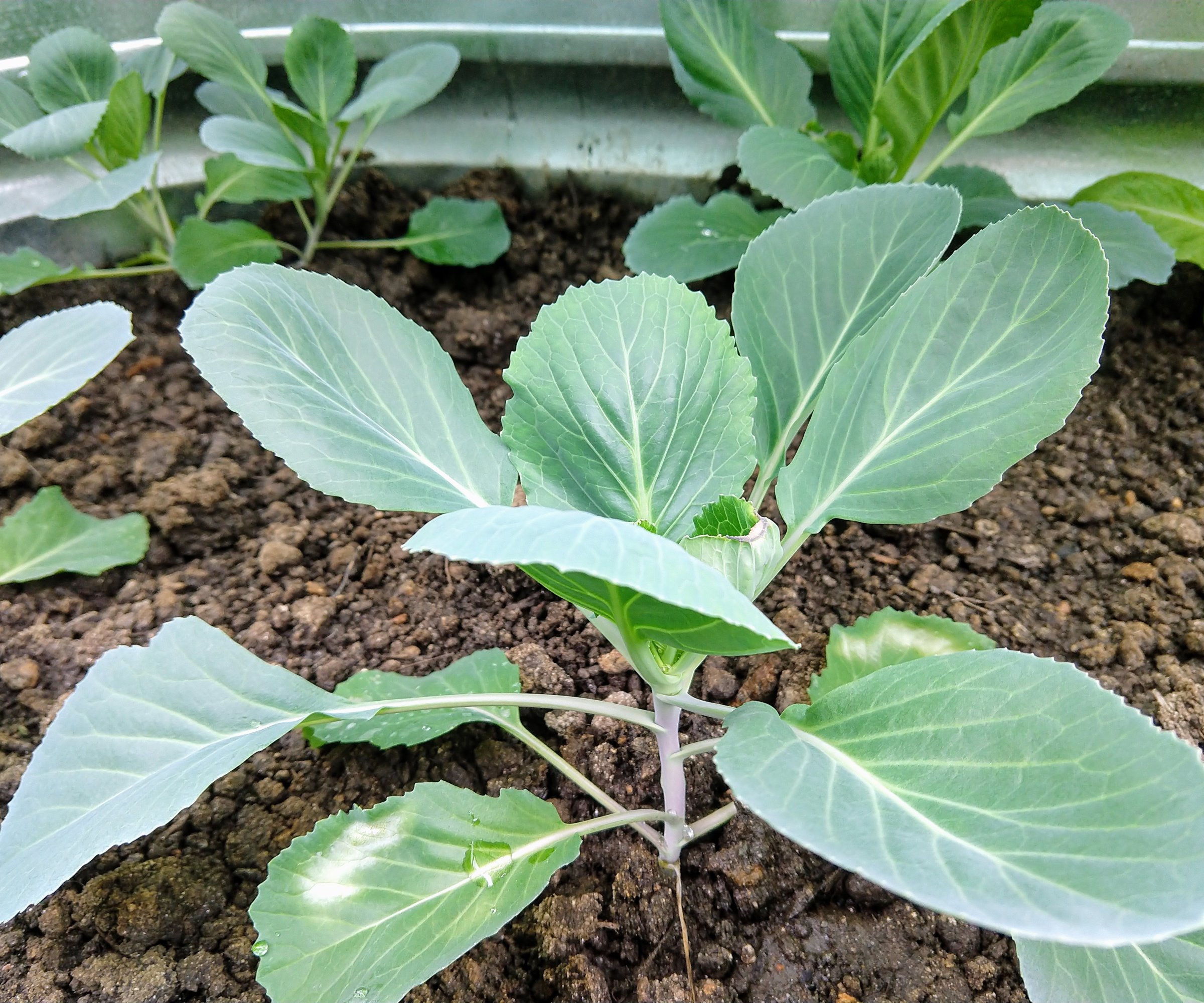
There are many different types of cabbages you can grow, and they all need to be planted at different times. The numerous types vary in shape and are classified by their harvest time – and importantly, the type they are dictates when you want to sow and plant cabbages.
I have grown many varieties of cabbages in vegetable gardens over the years, growing them for chefs at restaurants and also to sell to the public. I sowed, planted, and grew a mix of types of cabbages to have the longest harvesting season.
Knowing when to plant vegetables is an important part of ensuring they grow healthily. To help cut through any potential confusion, we take a look at the right time to sow and plant different cabbage types – so you can enjoy a great harvest of delicious homegrown cabbages.

What month do you plant cabbage?
Cabbages can be planted for many months of the year, from late winter all the way through to late summer or early fall. The right time to plant cabbages will depend on the type you are growing.
Lucy Hutchings, a leading vegetable expert and author known as She Grows Veg, advises to ‘pick the right variety depending on when you'll be growing it’. For example, she says: ‘It needs to be a heat-tolerant variety for summer and a cold hardy one for winter’.
It is important to understand the different types of cabbages to make sure you avoid making a planting mistake when it comes to timing. When you are ordering seeds and planning your vegetable garden for the year ahead, fully consider the range of cabbages you can pick to grow.
See the wide range of cabbage seeds at True Leaf Market
When to sow and plant cabbages

Young plants of cabbages can be purchased from garden centers, nurseries, or online to plant directly into a vegetable garden. The alternative is to grow the crop from seed, which can be done either indoors or outdoors. The proper dates to both sow seeds and plant your cabbages in the garden will vary depending on the particular type.
- Spring cabbage - Plants should be started from seed in late summer to early fall. The seeds can be sown in trays or modules in late summer to transplant in fall, or sown outdoors directly, while young plants can be planted in early to mid-fall. The crops will be ready to provide a harvest from mid-spring onwards.
- Summer cabbage - These types of cabbages are bred to cope with the hotter conditions of summer. Sow seeds indoors in early spring in a heated greenhouse or heated propagator. Harden the seedlings off and plant them out in late spring once the risk of frosts has passed - which is also the correct time to get young purchased plants in the ground. Outdoor sowings of seeds can start once the ground has warmed up from mid-spring onwards, depending on your US hardiness zone.
- Fall cabbage - The planting times for fall cabbage are similar to that of summer cabbage. Sow seeds in mid-to-late spring indoors, or sow seeds outdoors and plant seedlings from late spring onwards, once the frosts have ended. Fall cabbages provide a harvest from mid-fall into early winter.
- Winter cabbage - Winter cabbages are the most hardy varieties and can provide a crop during the colder months. Even though winter cabbages are a cold-season harvest, you do want to plan if you want to grow them from seed as they need a long growing season. Sow seeds from late spring onwards and any young winter cabbage plants want to be planted in early summer.
- Savoy cabbage - Of all the winter cabbages, savoy cabbages are the hardiest of the bunch. They are ball-shaped and feature distinctive crinkled leaves that have a milder flavor than other cabbages. The sowing and planting windows for savoy cabbages are the same as winter cabbages and they can provide a harvest all the way through into early spring.
Growing a mix of cabbage types can help you have the longest possible harvesting season. Combining different types and staggering the sowings and plantings means you can potentially enjoy cabbages year-round. Lucy Hutchings advises: ‘Use succession sowing, every couple of weeks for a few months to ensure a continuous supply of delicious home-grown cabbage.’
Tips for planting cabbages

Cabbage plants want to be planted in a sunny spot in the vegetable garden, ideally somewhere that gets at least six hours of direct sunlight each day. They want a soil type that is fertile and well-draining for optimal growth.
When it comes to the planting site, Charmaine Peters, farm director at Arden, also advises: ‘The soil pH should be between 6.5 and 6.8 so that the soil becomes less favorable for the growth and spread of clubroot disease, a common problem to cabbages.’
Crop rotation is also recommended to prevent the build-up of clubroot, so move crops around and avoid planting brassicas in the same spot in the garden for three years.
As part of planning a kitchen garden, utilizing companion planting can help protect your cabbage plants from potential pest problems down the line.
Charmaine Peters identifies alliums such as garlic, onion, and chives as ideal companion plants for cabbages. She adds: ‘The sulfuric compounds in these pungent plants can repel pests like deer, aphids, and cabbage loopers.’
Whether you are planting cabbages you bought, or transplanting seedlings grown at home, Lucy Hutchings has a tip to follow at planting time to help you get bigger and stronger plants.
The vegetable expert says: ‘Cabbage starts small and ends heavy, so make sure you plant your seedlings relatively deep. They're pretty good at growing new side roots out of the stems so this will also increase the size of their root system which makes for a stronger plant.’
FAQs
Does cabbage need a lot of room to grow?
Cabbages do need a good amount of space in which to grow and develop to full size. The exact size a cabbage will get depends on the type, with spring cabbages smaller than larger summer and winter types. The amount of room a cabbage needs can range from 12-18 inches and rows of cabbages should be spaced 18-24 inches apart.
Can I plant cabbage in a container?
Cabbages can be grown in pots as part of a vegetable container garden. They will need large containers to grow in, even if you choose to grow smaller varieties of cabbage. For example, a pot that is 18 inches wide, or a five-gallon container, would be large enough to grow only one cabbage.
Kale is another brassica and a member of the cabbage family. It is a crop that is high in vitamins and nutrients and plants can be cropped over a long period. Growing kale is very simple and it is a crop suited to growing in the ground, in containers, or raised beds.






